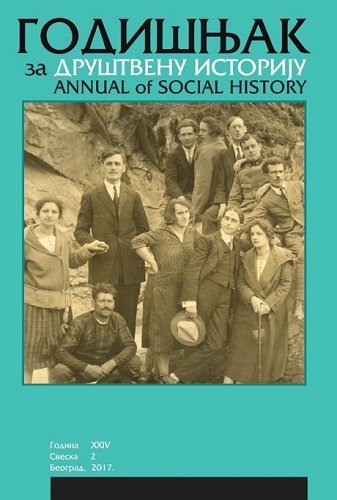
We kindly inform you that, as long as the subject affiliation of our 300.000+ articles is in progress, you might get unsufficient or no results on your third level or second level search. In this case, please broaden your search criteria.

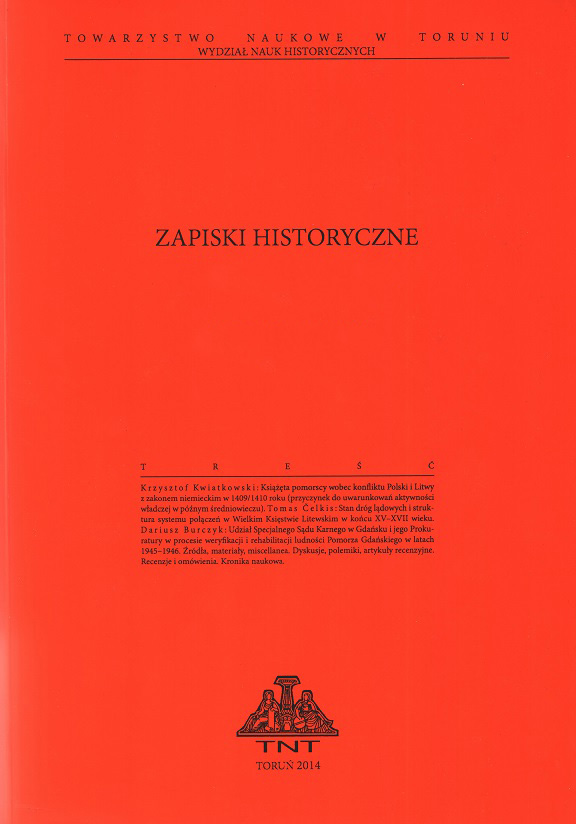
The edition presents the sources concerning the borders between the Duchy of Słupsk and the Monastic State of the Teutonic Order in Prussia of the 14th and 15th century. The basis for the edition are records included in the boundary book – the so called Grenzbuch B with the entry number OF 270a preserved in XX. Hauptabteilung in the Secret State Archive in Berlin-Dahlem. Among the published sources, texts no. 3, 6, 7 were edited by Reinhold Cramer, but they fail to include the dates (no. 6, 7) and the explanations of topographic names appearing in them. The remaining texts were not published (no. 1–2, 4–5, 8–12). The first group of sources (no. 1–4) was written in the period from the second half of the 14th century to the beginning of the 15th century. The second group of descriptions (no. 507) resulted from the circuit [Polish: ujazd] around the boundary by the Gdańsk commander Albrecht, earl von Schwarzburg of the end of 1405. They were included in the introductory Pomeranian-Teutonic border agreement of 14 October 1407, next in the sealed agreement of 23 September 1408. The creation of the third group of descriptions (8–9) should be associated with Teutonic preparations to the arbitration agreement in front of the Roman and Hungarian king Sigismund of Luxembourg, and with the activity of the sub-arbiter Benedict Makrai in the years 1412–1413. The last group of descriptions (no. 10–12) was created in the situation of the conflict concerning the establishment of the border between the Człuchów commandry and the Szczecinek land in the vicinity of Dołgie Lake in 1417. None of the published sources presents the whole Pomeranian-Teutonic border from the estuary of the river Łeba to the Baltic Sea in the north to Lędyczek in the south, but its individual fragments. Description no. 1 includes the description of the border between the Człuchów commandry / the Tuchola commandry and the Kingdom of Poland. In source no. 2 there is a list of arbitrators from the Pomeranian party and the Teutonic party negotiating the border between the villages of Oskowo and Siemirowice / Unieszyno. The information about informer and arbitrators may be found in source no. 3 (both the Pomeranian and Teutonic parties) and no. 4 (the Teutonic party). Each of the published descriptions is characterized by precision and plethora of topographic names. They should be used for the analysis of the problem of shaping and functioning of the border between the Duchy of Słupsk and the Monastic State of the Teutonic Order in Prussia in the context of the political and economic situation on the Pomeranian-Teutonic borderland in the Late Middle Ages.
More...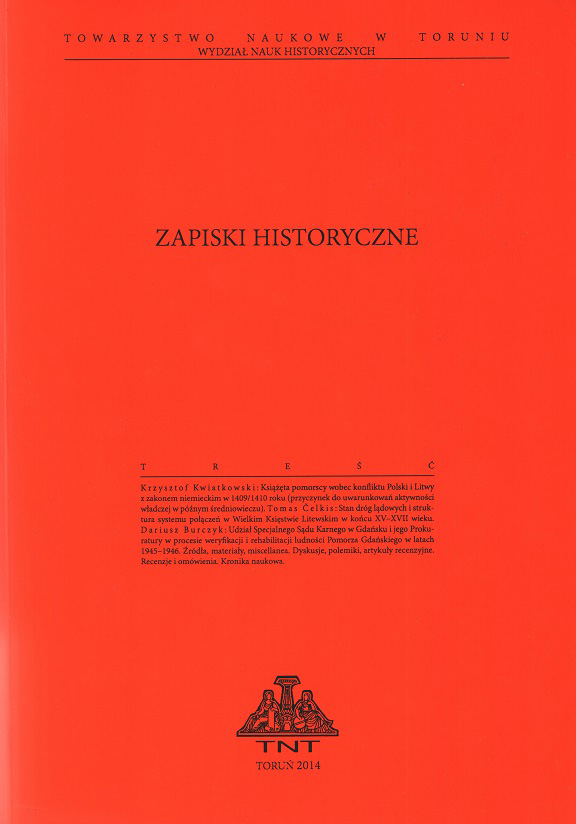
The article constitutes a prolegomenon to the issue of the service of Silesian Evangelicals in the Swedish army during the Great Northern War (1700–1721), which has so far been absent in scholarly literature. The main objective of this text is to analyse their motives for joining the military service of the Kingdom of Sweden, as well as to trace their career and position in the officer corps. The above issue is part of the research on the officer corps of Charles XII’s army, and thus it may serve as an important point of reference also for the works devoted to the service of Polish and Lithuanian officers in the Swedish army of that period. A group of several dozen representatives of the Silesian nobility and aristocracy, whose members served in the rank of officers in various units of almost all the enlistments of the Swedish army (the largest number in the mercenary värvade regementen), throughout the whole war period (the most numerous in the period of 1703/1704–1709), mainly as the dragoons, and less often in other cavalry formations. The primary source for selection was a twovolume dictionary by Adam L.C. Lewenhaupt entitled Karl XII:s officerare. Biografiska anteckningar (Stockholm 1920–1921). Among the handwritten primary sources, the materials stored in Riksarkivet and Krigsarkivet were used, which primarily constitute records from the Royal Registry and military roles. They have been subjected to critical analysis in order to prepare possibly the most thorough biographies of officers of Evangelical faith from Silesia. A number of research methods have been used, such as the biographical, genealogical or statistical methods. The representatives of the following old and influential Silesian families were mentioned: von Ferentheil, von Franckenberg, von Holly, von Koschembahr and von Lindeiner. Among less significant families of the Silesian nobility, the representatives of the following families were scrutinised: Dumky, Görlitz, Hoffman, Kluge and Schmitt. An in-depth survey in Swedish, German, Austrian, Russian, Danish, Latvian and Estonian archives is necessary for further research. This is due to the fact that the representatives of the described group served in the armies of various states over the years, and were also imprisoned in various countries. The article significantly broadens the knowledge about the ways of recruiting officers by the Swedish army during the Great Northern War, and also brings us closer to the individual profiles of Evangelical officers from Silesia and the ways of their promotion. It also points out the importance of the representatives of this group among the commanders of the mercenary regiments (värvade regementen). As the text takes into account the historical political, military and religious situation, it allows to understand what drove the representatives of the described group to join the ranks of Swedish troops. Further survey in foreign archives, especially among specific documents, such as military roles and lists of prisoners of war, may bring a great deal of new information about the mentioned officers, and allow to identify those who were not included in the Lewenhaupt’s book. Undoubtedly, it will also constitute a starting point for the research on the service of officers from the Polish-Lithuanian Commonwealth in the Swedish army, whose number was significant in the examined period.
More...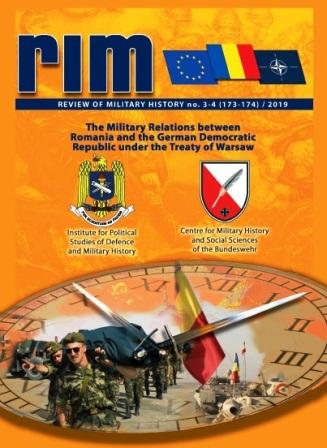
Historical Reference: Convenția de alianță defensivă între Regatul României și Republica Polonă (3 martie 1921, București)
More...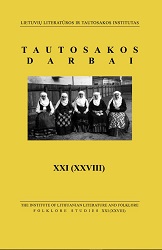
Vos devynis mėnesius gyvavo prie Švietimo ministerijos 1934 metų spalio mėnesį sudaryta Komisija tautos melodijoms rinkti ir tvarkyti, – jos paskirtį tiksliai nusako jau pats pavadinimas. Darbuotis jai teko šalia Vytauto Didžiojo universitete veikusios Tautosakos rinkimo komisijos. Sąlygos atsirasti šiai institucijai buvo pribrendusios. Lig tol mažai tebuvo rūpinamasi, kad kartu su liaudies dainų tekstais būtų fiksuojamos ir melodijos. Tuo tarpu Lietuvos muzikai vis labiau ėmė domėtis jomis, jas rinkti (Teodoras Brazys, Stasys Šimkus ir kt.), užrašinėti, panaudoti savo kūryboje. Be to, kaip tik tada atsiranda galimybių įsigyti naujos kartos garso įrašymo technikos – taigi kuo autentiškiau užfiksuoti tai, kas dainuojama. Tokiomis sąlygomis, daugiausia Zenono Slavinsko (vėliau tapusio Slaviūnu), Adolfo Sabaliausko, Stasio Šimkaus iniciatyva ir įkuriama Komisija tautos melodijoms rinkti ir tvarkyti. Čia pateikiami šios Komisijos posėdžių protokolai konkrečiai parodo, ką ji buvo užsimojusi nuveikti.
More...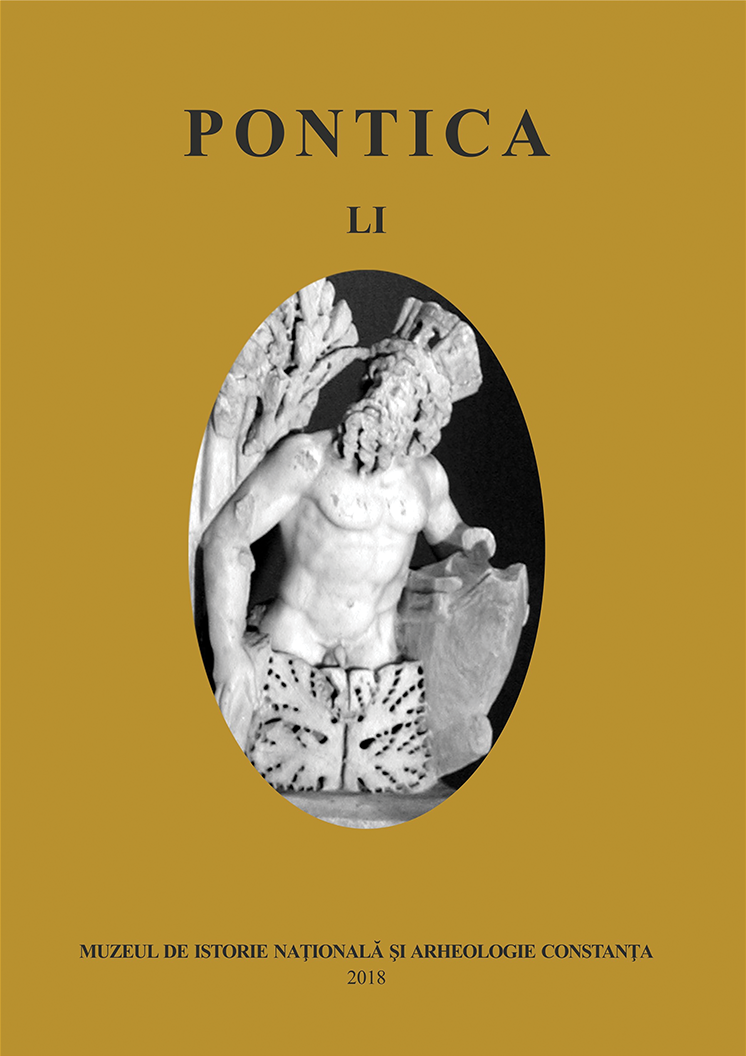
This article brings to the fore the main titles of romanian and foreign books under the management of the MNHAC library in 2017.
More...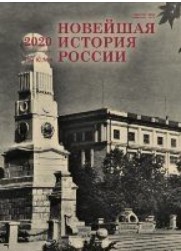
По приблизительным подсчетам, в 1920–1930-е годы Советскую Россию в составе делегаций и в индивидуальном порядке посетили около 100 тыс. иностранцев. К нам приезжали люди разных профессий, часто по собственной инициативе, для решения деловых вопросов, но нередко — из любопытства, дабы своими глазами увидеть, что представляет собой первое в мире пролетарское государство.
More...
Публикуемые воспоминания принадлежат перу Анатолия Анатольевича Куломзина (1870–1941), бывшего камергера высочайшего двора, ковенского и саратовского губернатора, действительного статского советника, секретаря и заведующего канцелярией вдовствующей императрицы Марии Федоровны. А. А. Куломзин был вторым сыном предпоследнего председателя Государственного совета Российской империи Анатолия Николаевича Куломзина (1838–1923), видного консервативного либерала, известного в числе прочего в качестве одного из самых высокопоставленных мемуаристов пореформенного времени, оставившего после себя, по словам историка А. В. Мамонова, «обширное и предельно сложное по своему составу и содержание наследие», охватывающее огромную историческую эпоху — от последних лет царствования Николая I и до начала ХХ в. Сам характер записок А. Н. Куломзина свидетельствует о предвзятости оценки члена Государственного совета Д. Д. Гримма, по мнению которого Анатолий Николаевич был «человек бесцветный, нерешительный, боявшийся как огня всякой тени ответственности».
More...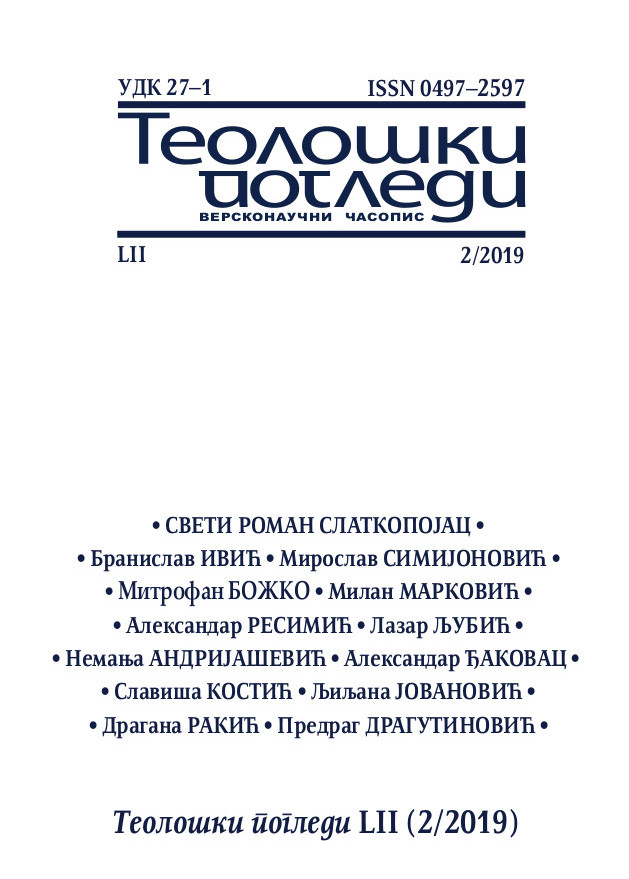
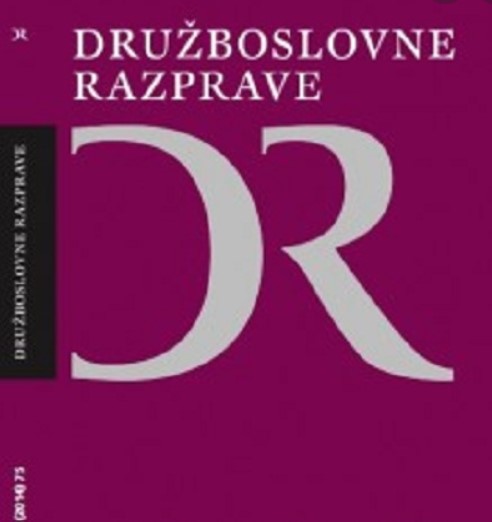
We analyzed the contents of 66 articles from a sample of 7 Slovene newspapers. All the articles discussed the events which happened during the period of social negotiation from 1.1.1994 - 18.5.1994. Our starting point was the hypothesis that discussion of these events should be meaningful, dramatic and should contain differentiated statements and an evaluation of the negotiating partners. The results of the analysis did not support these assumptions.
More...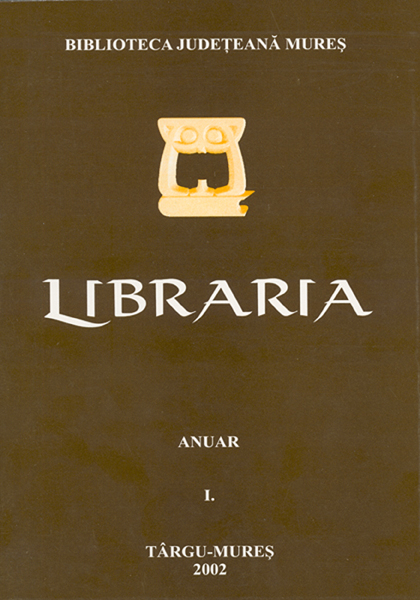
The present paper tries to present the documents that reffer to Aurel Filimon’s activity at Teleki Library from Târgu-Mureş and can be found in the Filimons archives.In 1937, The Ministry of Culture and Arts, according to the constitutive document from 5th of December 1913, appoints Aurel Filimon as honorific representant at the count Samuil Teleki’ Library. His mission was to examine the condition of the library and to find out if some books or manuscripts have been estranged, who has them and how can they be recovered.The paper is based on original / official documents and on the correspondence between Aurel Filimon, on one side, and count Teleki Carol, count Teleki Ádám, count Teleki Domokos and the librarian Gyulás Carol, on the other side.In his statement, Aurel Filimon analises the collections of books and manuscripts, and reffers to those that have dissapeared starting with 1830 (one of the documents used for this paper is the list drown up by Filimon and contains 96 titles). More than that, he realises a very important study concerning the history of Teleki Library and a description of its building.He also submits a lot of proposals concerning the better organization of the future inspection and his solutions are based on scientific bibliotheconomical principles.
More...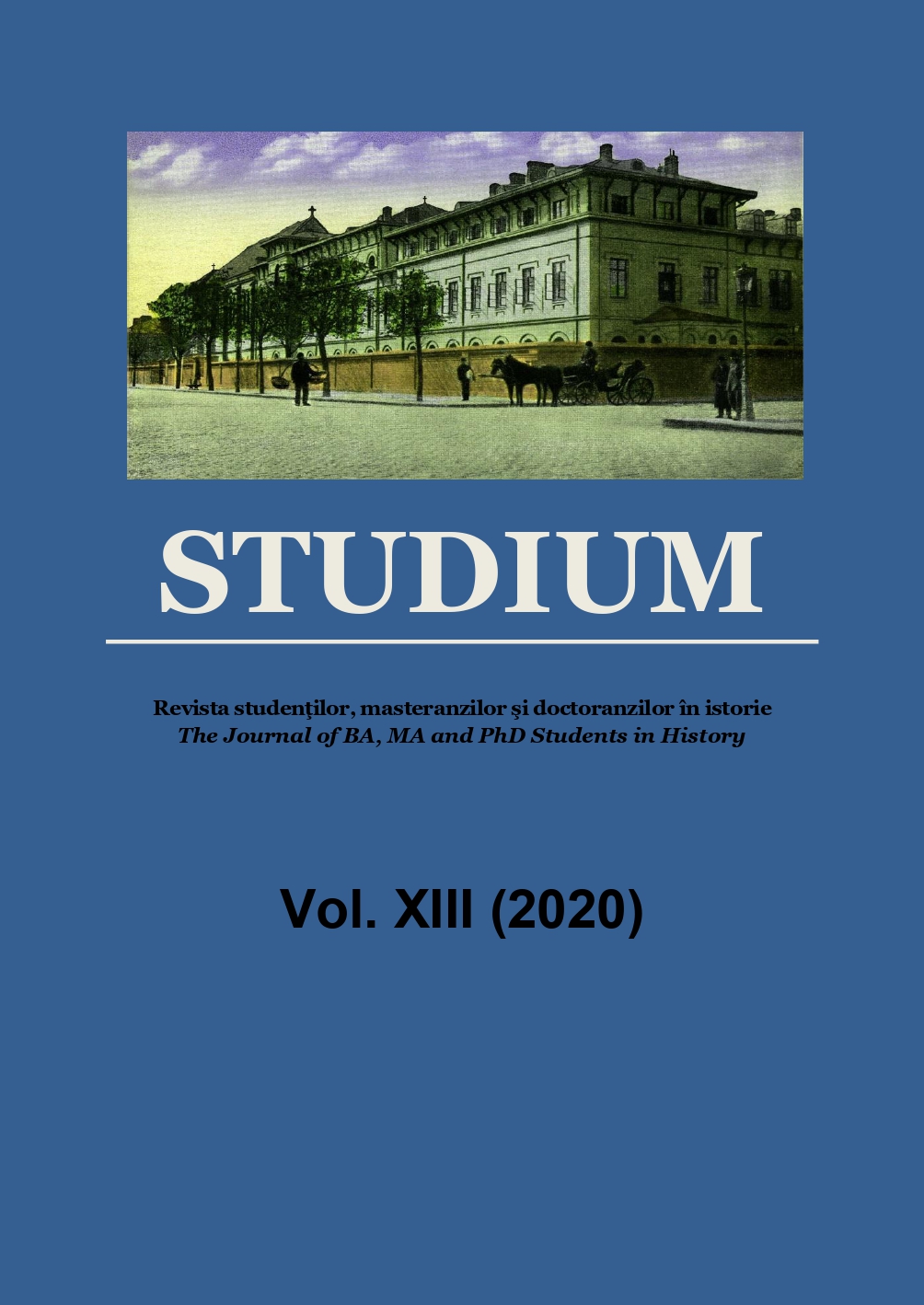
Historiography has not given much attention to the press created for/by firefighters. Therefore, our study follows the evolution of the first such publication, created in April 1929 under the name Bulletin of Romanian Firefighters [Buletinul Pompierilor Români], until the present day, when it is called Romanian Firefighters [Pompierii Români]. The stated purpose of this magazine was to create a specific media space for studies and observations made by civil specialists in the science of firefighting. The main aspects pursued by our own analysis are related to the language, architecture, graphics, format of the magazine, its general vision and the vision of its editors, and so on. We also sought to do an overall review of articles published during its 92 years of existence, and an analysis on how the journal communicated information to its readers. As a result, our study shows how its discourse combined scientific information with the emotion of events being portrayed, the impulses addressed to the military, the chronicle of events within the country, and how the format of the journal changed along with shifts within the institution responsible for its editing. This included, but was not limited to, the change of the magazine's name with the advent and then the fall of the Communist regime. Our conclusions show the need for improvement of the information published in the journal, depending on the study of the past and the understanding of future perspectives.
More...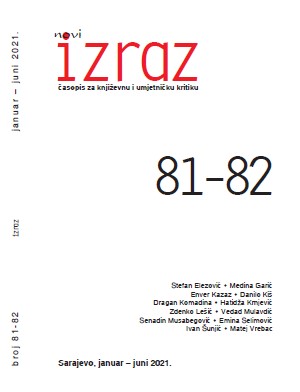
Prenošenje legendarnog, epski završenog junaka u jedan drugi rod, u drugi oblik kazivanja i drugi vremenski kontekst, povlači za sobom bitne promene u ponašanju i osećanju glavnog junaka, u stvari u strukturi radnje. Proces razaranja mita prošlosti i neprikosnovenog epskog junaka u njemu razvija se u pripoveci lve Andrića Put Alije Đerzeleza u dramatičnim etapama. Žanr priče teorijski i u neposrednom ostvarenju nametnuo je drugačije principe tretiranja ličnosti od onih koje zahtevaju strogi zakoni epske pesme. Proza je omogućila istraživanje “psihološke istine” glavnog junaka, što je u epskoj pesmi svedeno na detalj. lza Andrićevog Đerzeleza više ne stoji “narod”, on ne govori u ime “mnoštva” već u svoje ime. On dolazi medu ljude sam i sam ostaje do kraja. Njega ne štiti viša sila niti mu u nevolji pritiče u pomoć vila. Njega ne vodi ideja oslobođenja ili osvajanja. On ne teži nekom višem i po svom značaju opštem cilju.
More...
Powiedzieć, że Jędrzej Moraczewski był człowiekiem pióra, to nic nie powiedzieć. A jednak ta prosta konstatacja wielu może na pierwszy rzut oka dziwić. Moraczewski bowiem wyłania się zwykle zza sceny dziejowej w bardzo konkretnym przebraniu. Raz w sfatygowanej marynarce jako wytrwały działacz socjalistyczny i niepodległościowy, zaraz potem w dobrze skrojonym garniturze jako polityk, jeden z liderów Polskiej Partii Socjalno-Demokratycznej Galicji i Śląska Cieszyńskiego i Polskiej Partii Socjalistycznej (PPS), działacz związkowy, poseł do wiedeńskiej Rady Państwa i poseł na sejm w wolnej Polsce, premier i minister Rzeczypospolitej wreszcie.
More...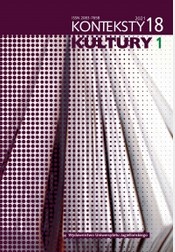
The article discusses personal documents through the lens of ethics. The argument focuses on Dziennik [Journal] by Jan Józef Szczepański, which is analyzed primarily with the use of Charles Taylor’s deliberations on ethics and subjectivity and David Parker’s study of ethical interpretations of autobiographical literature. The discussion presented in the article is based on several key concepts, including “constitutive good,” “strong evaluations,” “moral space,” “qualitative differentiations,” “conceptual framework.” The author seeks to answer the question of whether – and if so, how – a journal, in particular Szczepański’s Dziennik, may constitute an act of building identity and establishing subjectivity and how it articulates constitutive good and reveals the roots of morality. The article is also an attempt to demonstrate the necessity to adopt an ethical perspective in literary research (with particular emphasis on autobiographical literature) in the “secular age.”
More...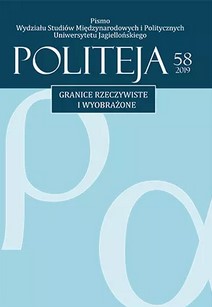
The University Library in Wrocław has a rich collection of old works from the Netherlands, which proves that in the old days academic and bibliophilic research was carried out in the Silesian region. The works reflect various cultural, academic and religious connections between the inhabitants of Silesia and the ones of Western Europe. The printed texts give evidence confirming that Silesian bibliophiles purchased books abroad, as well as from the local book sellers. Thus, they participated in the academic and cultural movements of that time. The paper is to present the Dutch emblem volumes that are in the possession of the University Library in Wrocław, and especially how they made their way from the Netherlands to Silesia. A number of questions arise: why Silesian collectors used to buy works written in Dutch and whether that did not create a cognitive barrier for them. What kind of motivation could have inspired them to buy those books? Was it the so‑called peregrination academica that encouraged people to study in the Netherlands? What I would like to do as well is to show unlimited passions of library owners who were open‑minded to different fields of interest, which was reflected in their book collections that now are a part of the Library in Wroclaw.
More...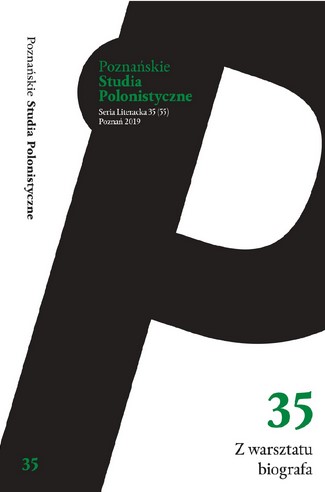
The article proposes a new reading of Album biograficzne zasłużonych Polaków i Polek wieku XIX (1901–1903) [Biographic album of distinguished nineteenth-century Polish men and women (1901–1903)]. It is proven that this collection of characteristically designed biographies and an unusual collective biography is an important work of Polish humanities of the turn of the twentieth century that can be placed in relation to both Thomas Carlyle’s hero concept and Jacob Burckhardt’s postulates of the ‘anthropologisation of history’. The three selected biograms (Klaudyna Potocka’s by Aleksander Kraushar, August Hiacynt Dziarkowski’s by Józef Peszke and Adolf Pawiński’s by Jan Karol Kochanowski) are case studies allowing for the reconstruction of the dilemmas and text strategies each time specifying the biographer’s unique workshop and the techniques of uncovering it.
More...
Zygmunt Haupt’s preserved correspondence with the editors of Tematy (Paweł Mayewski and Jan Kempka) from the years 1962-1970 consists of seventeen letters. During that time, Haupt published in the quarterly from New York his translations of three poems by Robert Frost and one by Robert Lowell, as well as one short story of his own. This correspondence, although modest in volume, is an interesting testimony of Haupt’s collaboration with an important émigré journal. It also presents the writer as someone interested in the current literary life, trying his hand as a translator of American poetry.
More...
The conversation concerns the broadly-understood methodological background and substantive knowledge of the co-author of the highly praised biography of Jan Potocki, François Rosset. The researcher talks about the importance and usefulness of knowledge of the French eighteen-century novel, the Enlightenment ideas and artistic trends for the work on the biography of the author of The Manuscript found in Saragossa. Rosset also talks about archive research related to the work on this biography and about how he used his knowledge of editorial meanders of the famous novel while writing. The researcher emphasizes that the authors of biographies should keep a distance from the characters of their stories and that their main goal is to try to present the life cycle of a given person as comprehensively as possible, supporting it with sources.
More...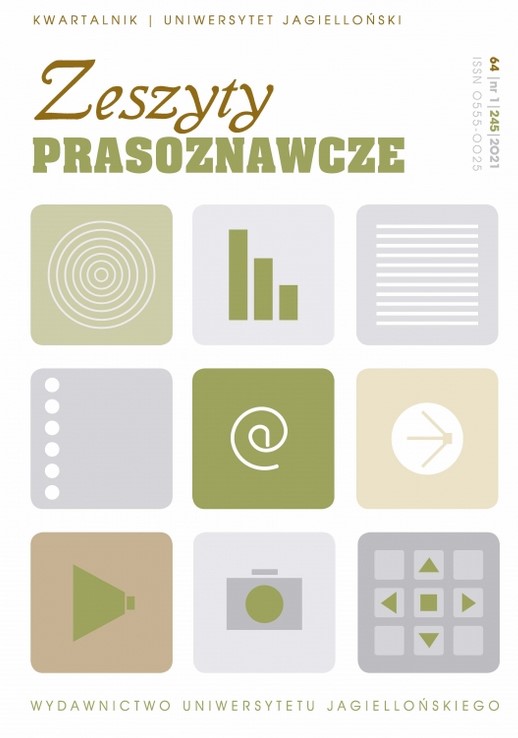
The aim of the article is to analyze the ways of building credibility of the author in the articles published in two monthly magazines Spiritual Knowledge (Wiedza Duchowa) and Lotus (Lotos) in pre-war Poland. The magazines were in line with the trends of the time of the interwar period, combining esoteric themes with the latest scientific discoveries. Authors of the articles published in these periodicals skillfully referred to various types of authority -both scientific knowledge and other sources, including personal sources. The analysis of the research material was conducted from the perspective of strategic places in the press text, which made it possible to describe the ways of presenting various topics, the functions of the titles of the articles and the most common rhetorical means used for persuading readers.
More...